Animal most likely to kill you in Georgia | Dangerous Animals In Georgia

- By
- Aparna Patel
- |
- 3 Apr, 2023
- |
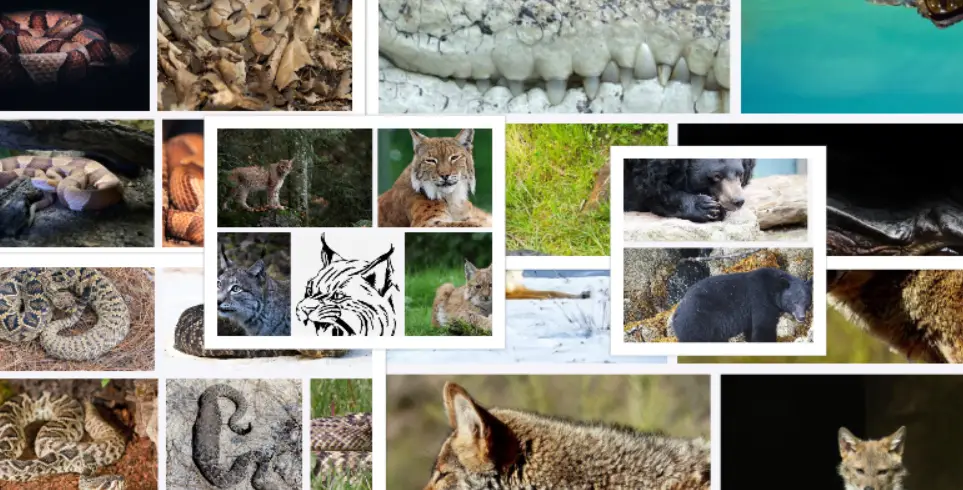
While Georgia, USA is known for its stunning natural landscapes and diverse wildlife, there are a few species that can pose a danger to humans. In fact, one particular animal stands out as the most likely to cause harm: the white-tailed deer. While this may come as a surprise, deer-related accidents are responsible for the majority of animal-related fatalities in the state. However, there are other dangerous animals in Georgia that residents and visitors should be aware of, including venomous snakes, alligators, and even bears.
In this blog post, we’ll take a closer look at the most dangerous animals in Georgia and what you can do to stay safe in their presence. Whether you’re planning a hike in the mountains or a day trip to the beach, it’s important to be aware of the potential risks and take the necessary precautions to protect yourself.
While there are several animals in Georgia that can be potentially dangerous, it’s important to note that encounters with these animals are relatively rare. Here are some of the most dangerous animals you may encounter in Georgia:
- Eastern Diamondback Rattlesnake: The largest venomous snake in North America, the Eastern Diamondback Rattlesnake is found in southern Georgia and can be dangerous if provoked.
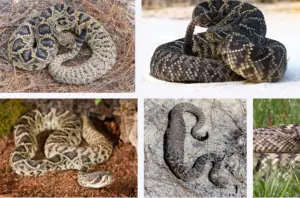
The Eastern Diamondback Rattlesnake is one of the most dangerous animals in Georgia, and it’s the largest venomous snake in North America. Found in the southern part of the state, these snakes are known for their distinctive diamond-shaped pattern and their potent venom. They can grow up to 8 feet in length and weigh up to 10 pounds, making them a formidable predator.Eastern Diamondback Rattlesnakes are primarily found in wooded areas and are most active during the warmer months of the year. They’re known for their aggressive behavior and will defend themselves if they feel threatened. If bitten by an Eastern Diamondback Rattlesnake, it’s important to seek medical attention immediately, as their venom can cause severe pain, swelling, and even death in some cases.Despite their dangerous reputation, Eastern Diamondback Rattlesnakes are an important part of Georgia’s ecosystem and play a crucial role in controlling rodent populations. If you encounter one in the wild, it’s best to admire it from a safe distance and avoid disturbing it. Remember, snakes like the Eastern Diamondback Rattlesnake are an important part of the natural world, but it’s always important to respect their power and potential danger. - Copperhead Snake: Another venomous snake found in Georgia, the Copperhead can deliver a painful bite if threatened.
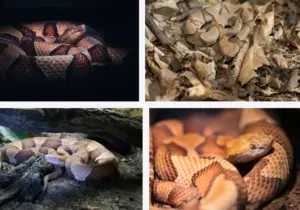
The Copperhead Snake is a venomous snake species that is found in Georgia, as well as many other parts of the eastern United States. They are identified by their distinctive copper-colored heads and reddish-brown bodies with dark crossbands.Copperheads are primarily found in wooded areas, but they may also be encountered in suburban or urban areas, such as parks or backyards. They are not generally aggressive towards humans, but will bite if they feel threatened or cornered. Their venom is relatively mild compared to other venomous snakes, but it can still cause pain, swelling, and other symptoms.To avoid encountering a Copperhead in Georgia, it’s important to take precautions while hiking or spending time outdoors in wooded areas. Wear appropriate clothing, including long pants and boots, and be mindful of where you step or reach. If you do encounter a Copperhead, it’s best to slowly back away and give it space to move on its own. If you are bitten by a Copperhead, seek medical attention immediately. - Alligators: Found in freshwater rivers and swamps in Georgia, alligators can be dangerous if approached or provoked.
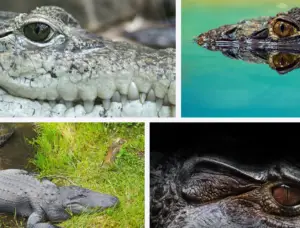
- Black Bears: While black bears are generally shy and tend to avoid humans, they can be dangerous if surprised or cornered.
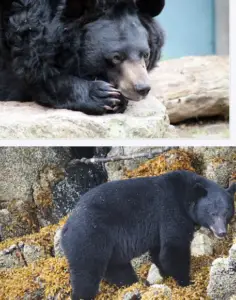
- Coyotes: While not typically a threat to humans, coyotes in Georgia have been known to attack pets and small children.
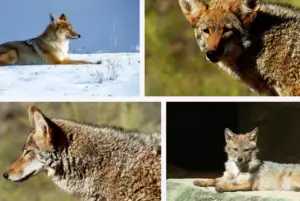 Coyotes are a type of wild canine that can be found in Georgia, as well as many other parts of North America. They are relatively small, with tan or gray fur and a pointed snout.Coyotes are highly adaptable and can thrive in a variety of environments, including rural, suburban, and even urban areas. They are primarily active at dawn and dusk, but can also be seen during the day or at night.While coyotes are generally not a threat to humans, they can be dangerous to pets and livestock. They may also become more aggressive if they are habituated to human presence or if they are protecting their young.
Coyotes are a type of wild canine that can be found in Georgia, as well as many other parts of North America. They are relatively small, with tan or gray fur and a pointed snout.Coyotes are highly adaptable and can thrive in a variety of environments, including rural, suburban, and even urban areas. They are primarily active at dawn and dusk, but can also be seen during the day or at night.While coyotes are generally not a threat to humans, they can be dangerous to pets and livestock. They may also become more aggressive if they are habituated to human presence or if they are protecting their young.
To avoid conflicts with coyotes in Georgia, it’s important to take precautions while hiking or spending time outdoors. Keep pets on a leash and supervise them at all times, especially at dawn and dusk. If you encounter a coyote, make loud noises or throw objects to scare it away. If you live in an area where coyotes are present, make sure to secure your garbage and compost, and keep pet food and water indoors.
- Bobcats: Another predator that is generally not a threat to humans, bobcats can be dangerous if cornered or provoked.
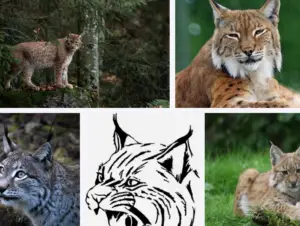 Bobcats are a medium-sized wild cat species that are native to Georgia, as well as many other parts of North America. They are identified by their distinctive spotted fur, short tails, and tufted ears.Bobcats are primarily found in wooded areas, but they may also be found in suburban or urban areas, particularly near green spaces such as parks or golf courses. They are generally shy and reclusive, and will usually avoid contact with humans.In Georgia, bobcats are protected under state law and cannot be hunted or trapped without a permit. They play an important role in the state’s ecosystem as a predator of smaller animals such as rodents and rabbits.If you encounter a bobcat in Georgia, it’s important to keep a safe distance and avoid approaching or attempting to feed it. While they are generally not aggressive towards humans, they may become defensive if they feel threatened or cornered. If you see a bobcat in your yard or near your home, try to make loud noises or use other deterrents to encourage it to move on.
Bobcats are a medium-sized wild cat species that are native to Georgia, as well as many other parts of North America. They are identified by their distinctive spotted fur, short tails, and tufted ears.Bobcats are primarily found in wooded areas, but they may also be found in suburban or urban areas, particularly near green spaces such as parks or golf courses. They are generally shy and reclusive, and will usually avoid contact with humans.In Georgia, bobcats are protected under state law and cannot be hunted or trapped without a permit. They play an important role in the state’s ecosystem as a predator of smaller animals such as rodents and rabbits.If you encounter a bobcat in Georgia, it’s important to keep a safe distance and avoid approaching or attempting to feed it. While they are generally not aggressive towards humans, they may become defensive if they feel threatened or cornered. If you see a bobcat in your yard or near your home, try to make loud noises or use other deterrents to encourage it to move on. - Mosquitoes: While not an animal, mosquitoes in Georgia can carry diseases such as West Nile virus and Zika virus.
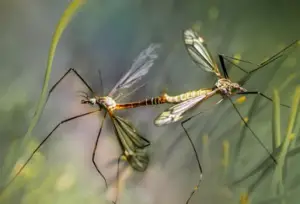
It’s important to remember that these animals are a natural part of the ecosystem in Georgia and it’s important to respect their habitats and avoid interactions whenever possible.
Read More
Animal most likely to kill you in Georgia
While animal-related fatalities are relatively rare in Georgia, the most likely animal to cause a fatal attack in the state is the Eastern Diamondback Rattlesnake.
This is the largest venomous snake in North America and can be found in southern Georgia. While the Eastern Diamondback Rattlesnake is not typically aggressive and will generally avoid humans, it can deliver a dangerous bite if provoked or threatened.
It’s important to remember that encounters with dangerous animals are relatively rare in Georgia, and following basic safety precautions such as staying on marked trails and being aware of your surroundings can help to minimize any potential risks.
More Post
Search Posts
Latest posts
-
4 Mar, 2024
Why are there no seat belts on trains?
Popular posts
-
4 Mar, 2024
Why would you wrap your luggage in plastic?